Ernest Giles Crossing From South to Western Australia in 1875.
Detailed map illustrating the route taken by Ernest Giles second expedition across Australia between May 1875 and November 1875, between Perth and Beltana.
Sir Thomas Elder was a Scottish-Australian pastoralist, highly successful businessman, philanthropist, politician, race-horse owner and breeder, and public figure. Amongst many other things, he is notable for introducing camels to Australia.
Elder encouraged exploration, contributed largely to Warburton's 1873 expedition and Giles's in 1875, supplying camels in each case, which proved to be of the greatest value. He also contributed liberally to the cost of other explorations, and in no case sought or obtained any return for himself. On one occasion he offered £5,000 on condition that a like sum was subscribed by the public to finance an expedition to the Southern Ocean, but the condition was not fulfilled.
William Ernest Powell Giles (1835 - 1897), was an Australian explorer who led five major expeditions in central Australia. Giles was born in 1835 at Bristol, England, son of William Giles, merchant, and his wife Jane Elizabeth, née Powell. Educated at Christ's Hospital (where he was admitted as William Ernest Powell Giles), he followed his parents to Adelaide in 1850. He moved to Victoria in 1852, tried his luck on the goldfields without success, and became a post office clerk in Melbourne. By 1861 he was in western New South Wales where until 1865 he engaged in several expeditions aimed at assessing the pastoral country beyond the Darling River. These journeys gave him both the experience and the taste for further exploration.
In 1872, Giles was chosen to lead a small expedition organized by Dr Mueller, to investigate parts of central Australia west of the new overland telegraph line. From Charlotte Waters the party followed the Finke Valley to the Missionaries' Plain south of the MacDonnell Ranges, but found its way blocked to the west by lack of water and to the south by the salt-pans of Lake Amadeus, which Giles named. There his second-in-command, Carmichael, insisted on turning back despite Giles's wish to find a route to the coast of Western Australia. This ambition was to inspire his remaining expeditions, the first of which, again backed by Mueller, was assembled the next year. Starting further south, Giles followed the line of the Musgrave Ranges which, unknown to him, had just been discovered by Gosse. On reaching Mount Olga,, which he had earlier named from a distance, Giles found from Gosse's dray tracks, that he had been anticipated, but since they soon turned back, he was encouraged to persevere. He spent the next summer trying to break through to the west from a base in the Tomkinson Range, and in autumn persisted in attacking the desert from a northerly point in the Rawlinson Range. A desperate final effort cost him the life of one of his men, who gave his name to Gibson's Desert, and brought Giles himself close to death; the exhaustion of his supplies compelled him to retreat, defeated, to the overland telegraph line.
Although forestalled by P. E. Warburton and John Forrest, Giles succeeded in his cherished aim of making an overland crossing from South to Western Australia in 1875. Equipped with camels by Thomas Elder, he set out from Beltana and went for supplies to Port Augusta, whence he proceeded first north-west and then west along a string of waterholes, Wynbring, Ooldea, Ooldabinna and Boundary Dam, until he reached the Western Australian border. He then risked a 312-mile (502 km) marathon across the Great Victoria Desert before discovering the Queen Victoria Springs; from there he was able to complete his journey to Perth in fairly easy stages. On the return trip in 1876 he went north to the Murchison and Ashburton Rivers, crossed Gibson's Desert, and reached the Rawlinson Ranges, where he had been held up in 1874. He thus achieved a double crossing of the western half of the Australian continent.
Although Giles found little good country, his expeditions added substantially to the knowledge of central Australia. He published Geographic Travels in Central Australia from 1872 to 1874 (Melbourne, 1875), The Journal of a Forgotten Expedition (Adelaide, 1880) and a full account of his journeys in two volumes, Australia Twice Traversed (London, 1889). For his explorations he was made a knight of the crown of Italy, honorary member of several Continental societies and in 1880 fellow and gold medalist of the Royal Geographical Society, London. The South Australian government granted him £250 for each of his expeditions in 1872 and 1874, and a lease of some 2000 square miles in the Northern Territory after 1876, but he was refused official appointment because, as Governor Jervois claimed on 11 October 1881, 'I am informed that he gambles and that his habits are not always strictly sober'.
Giles was a land classifier in the Western District of Victoria in 1877-79, briefly revisited the Musgrave Ranges in 1882, represented a prospecting company he had formed in the Kimberleys in the 1890s, and joined the rush to Coolgardie. There he became a clerk in the warden's office and on 13 November 1897, died of bronchial pneumonia. Although Giles made no major discoveries, he is among the more interesting Australian explorers by virtue of his journals which, although overwritten, display a fine descriptive ability and constitute a record of inner experience as well as outward observation.
August Heinrich Petermann (1822-1878) is a renowned German cartographer of the nineteenth century. Petermann studied cartography at the Geographical Art-School in Potsdam before traveling to Edinburgh to work with Dr. A. Keith Johnston on an English edition of Berghaus’ Physical Atlas. Two years later he moved to London, where he made maps and advised exploratory expeditions as they set off to explore the interior of Africa and the Arctic.
In 1854, Petermann returned to Germany to be Director of the Geographical Institute of Justus Perthes in Gotha. There, he was the editor of the Geographische Mittheilungen and Stieler’s Handatlas. The Royal Geographical Society of London awarded him their Gold Medal in 1860. He continued his interest in exploration in Germany, fundraising for the German Exploring Expeditions of 1868 and 1869-70, which sought an open Arctic sea. Tragically, he committed suicide in 1878.









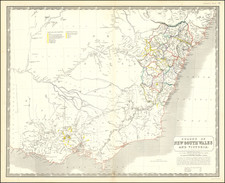
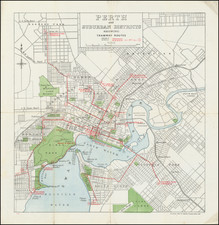
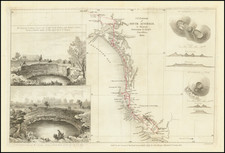
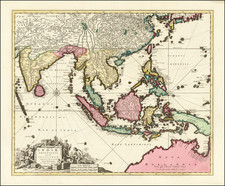
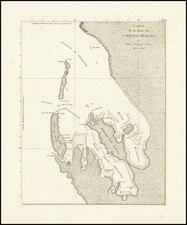
![[ Sydney ] Plan du Comte de Cumberland (Nouvelle-Galles du Sud) d'apres les Cartes Angloises](https://storage.googleapis.com/raremaps/img/small/77739.jpg)